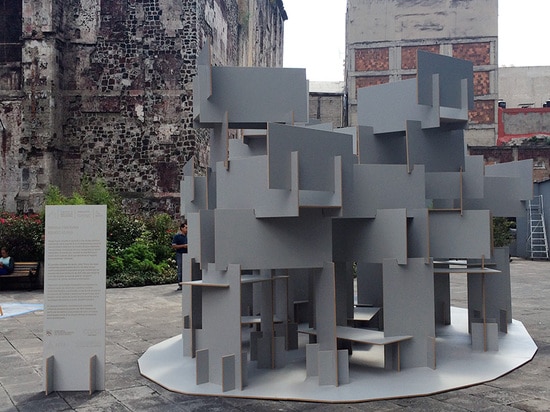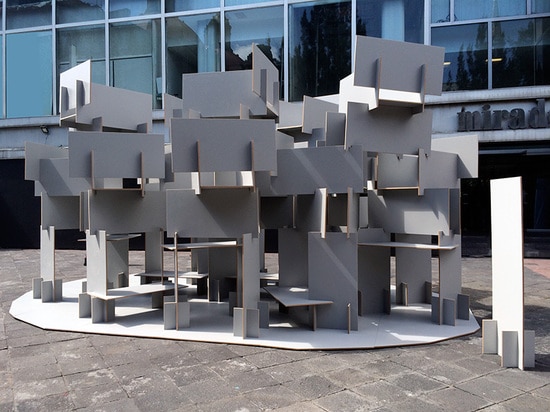
#LANDSCAPING AND URBAN PLANNING PROJECTS
Kengo kuma tells us about his 'habitable forest' pavilion at AMD 2014
Kengo kuma has designed a pavilion titled ‘bosque habitable’ (habitable forest) for the abierto mexicano de diseño 2014.
The structure was installed in a public space behind the torre latino americano in the historic center of mexico city from november 12-16. the pavilion is a representation of kengo kuma and associates’ architectural approach – to tie in with the theme of this year’s abierto ‘processes’. designboom spoke to kengo kuma to learn more about the project…
designboom: what brief were you given by the abierto mexicano de diseño for this pavilion?
kengo kuma: the abierto mexicano de diseño asked us to create a pavilion that highlighted our process and way of thinking. the basis of the pavilion is to highlight small architecture – recently we’ve worked on architecture of all scales from small spaces up to towers – but in every project we try to achieve ‘smallness’. smallness is not related to the total volume of the building, even if the building itself is huge, we want to achieve the feeling of smallness within it – that’s what we have tried to explore and communicate with this pavilion. the boards used to create this structure are small (90cm by 60cm) human scale – you can easily handle one panel yourself, they are also quite thin (2cm) and light but also sturdy. so, the panels allowed us to create an intimate space – intimacy is something very important for our studio.
DB: how did you come to arrive at this solution?
KK: the starting point was the boards, we noticed that they feel very comfortable – opposed to a very heavy material like concrete, which can intimidate you. when you are dealing with a material or components that you can carry, and reconfigure it helps you feel calmer about a structure. this material is democratic, so the pavilion represents democracy and architecture in the 21st century.
DB: did the fact that the pavilion would be built in mexico influence your design in any way?
KK: yes, I love the freedom of mexican culture. I especially like the home of frida khalo and diego rivera, which I visited on my last trip to mexico city – I love the freedom of that space and the intimacy of it – those were things I wanted to represent in this pavilion. in a way this is sort of homage to that house.
DB: which aspects of the design are you most satisfied with?
KK: the ‘crowd-like’ nature of the design. I like the ambiguous form, the layers and the fact it doesn’t look rigid. usually architects try to achieve a specific form or shape, especially with pavilions but I wanted to avoid that approach. the ‘crowding’ approach resulted in a nice, fluid form. the chance to experiment without too many restrictions was also very satisfying.
DB: have you learned anything from this project that you’ll take into your next works?
KK: through the design process of this pavilion we learned more about ‘smallness’ and intimacy in living spaces. I’m very keen to apply what we started to learn in this project to different contexts.
DB: what are you thoughts on contemporary mexican architecture?
KK: from what I have seen I feel that it should have more freedom – like frida and diego’s house! young architects can afford to be braver and propose solutions that we don’t expect – give us their personal take on things. what you can see with most contemporary architecture, not just in mexico but also in japan, in europe – everywhere, is the influence of globalization and capitalism, young architects have been swept up by it. I think it’s a shame because architecture should reflect its surroundings, not just the physical surroundings but also the culture it comes from. I feel that a lot of contemporary architecture doesn’t stand for much, it’s lacking substance.
DB: do you have any advice for young architects on how buck this trend?
KK: don’t be so timid. enjoy the process of architecture. early in your career you should enjoy the freedom and the enthusiasm of so much being new. when I see the work of young architects I want to feel the enjoyment they had making a project in the results. don’t think about immediate commercial success, look for projects where you can be expressive and try to propose something different – like pavilions for example.





